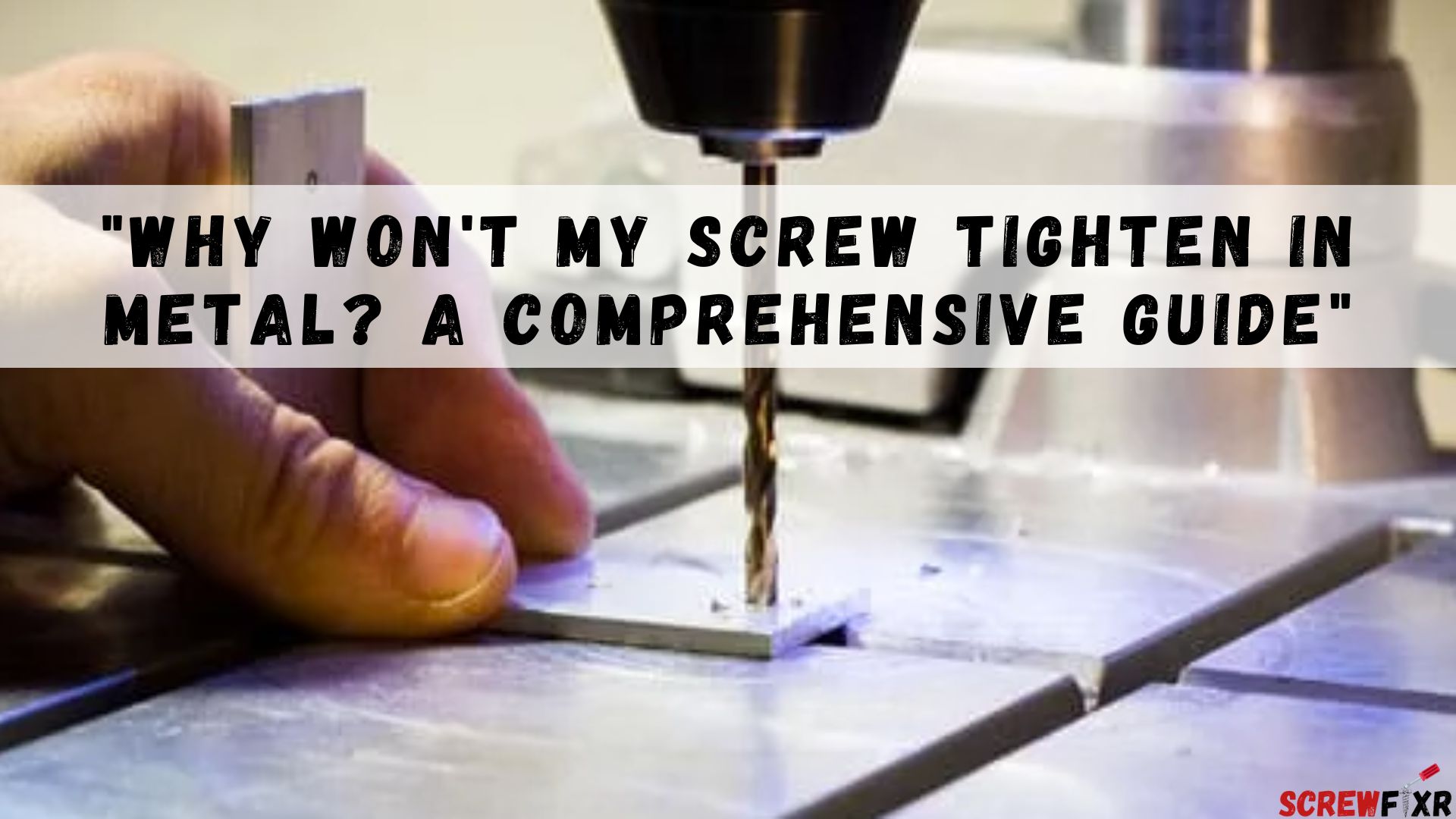Screws are a vital component in any DIY or construction project, and their ability to grip securely into a material is what makes them so useful. But what do you do when a screw won’t tighten in metal? This is a common problem faced most of the time by both DIY enthusiasts and professionals and can be frustrating, to say the least.
Here, we will explore the reasons why screws won’t tighten in metal, and provide a solution to this common problem.
The Causes Why Screw Won’t Tighten In Metal

There are several reasons why a screw might refuse to tighten in metal, and understanding these causes is the first step in solving the problem.
Metal Type
The type of metal can have an impact on the ability of the screw to grip. Softer metals like aluminum or brass can be more prone to stripping, making it difficult for screws to grip securely.
Rusty or Dirty Metal
Rust and dirt on the surface of the metal can also interfere with the screw’s ability to grip. The screw may simply spin in place, or the metal may strip, making it difficult to tighten the screw.
Damaged Screw Threads
Damaged screw threads can also prevent the screw from tightening properly. This can occur if the screw has been damaged during installation, or if it is an old screw that has been used repeatedly over time.
Over-Tightening
Over-tightening the screw can also cause problems. When a screw is tightened too much, it can cause the metal to strip, making it difficult for the screw to grip securely.
Read Also: How Long Will Zinc Screws Last Outside
How to Solve the Problem of a Screw that Won’t Tighten in Metal

Now that you understand the causes of a screw that won’t tighten in metal, it’s time to explore some solutions to the problem.
Clean the Metal Surface
If the metal surface is dirty or rusty, it’s important to clean it before trying to install the screw. Use a wire brush or sandpaper to remove any rust or debris from the surface, and then clean it with a degreaser to remove any oils or other contaminants.
Use the Right Screw
It’s important to use the right screw for the job. If you’re working with a softer metal like aluminum or brass, choose a screw with a low thread count, or consider using a self-tapping screw.
Use a Tap
If the screw threads are damaged, you can use a tap to repair them. A tap is a tool that is designed to clean and repair screw threads, and it can be used to restore damaged threads so that the screw will grip securely.
Avoid Over-Tightening
It’s also important to avoid over tightening the screw. Use a torque wrench to ensure that the screw is tightened to the correct specifications, and avoid using excessive force.
FAQs

Can I use a different type of screw if the one I have won’t tighten in metal?
Yes, you can use a different type of screw if the one you have is not working. Choose a screw that is designed for use in metal, and consider using a self-tapping screw if you’re working with a softer metal.
How can I prevent screws from stripping in metal?
To prevent screws from stripping in metal, make sure to clean the metal surface before installing the screw. Use the right screw for the job, and avoid over tightening to ensure the screw is tightened to the correct specifications. If necessary, use a tap to repair damaged screw threads.
Can I use a drill to tighten a screw in metal?
Yes, you can use a drill to tighten a screw in metal, but it’s important to use the correct drill bit and avoid over-tightening the screw.
Conclusion
Now you understand the frustrating problems behind the screws that won’t tighten in the metal and how can this be solved. Understanding the causes of the problem, and following the simple solutions outlined above will help you to tighten screws securely in metal surfaces.
Relevant resources:


